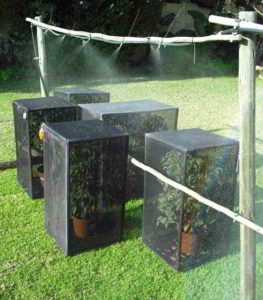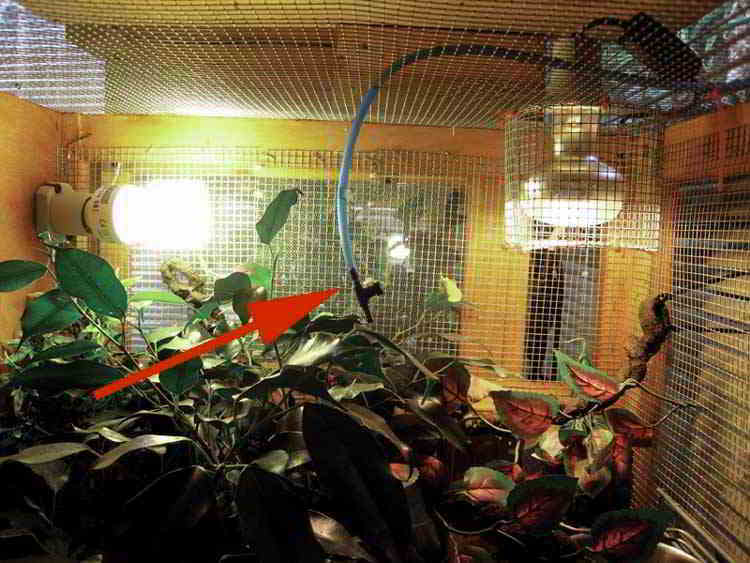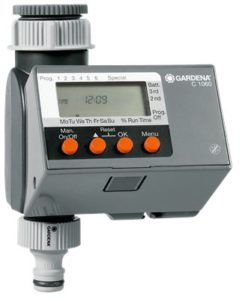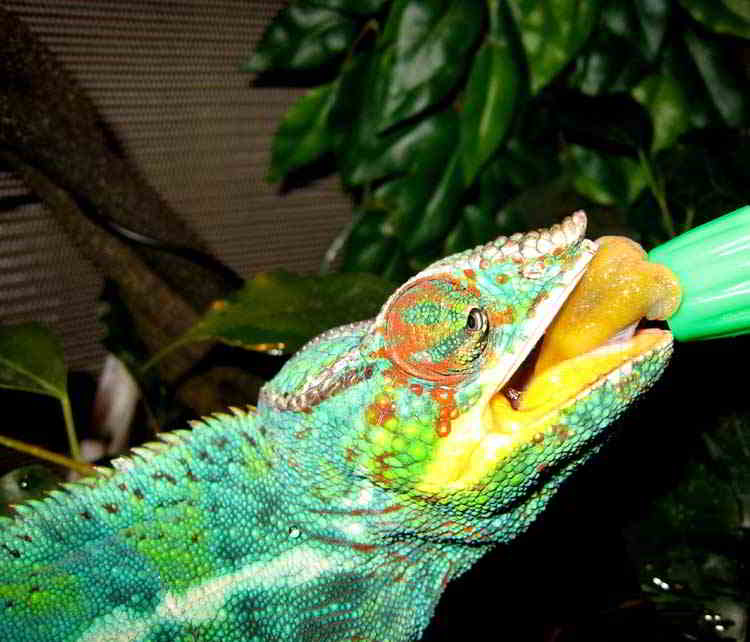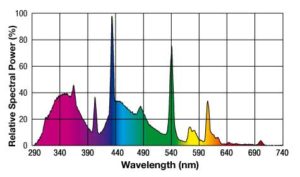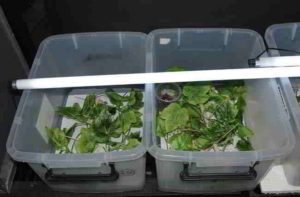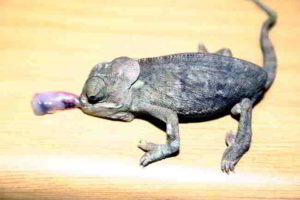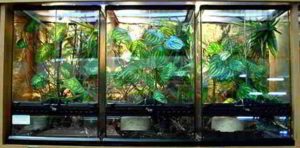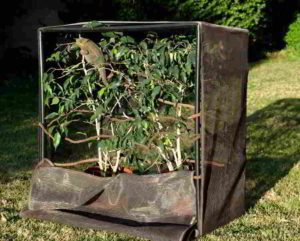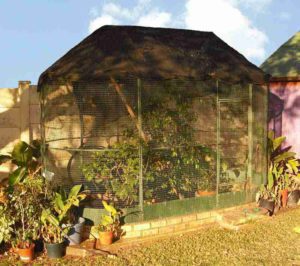Metabolic Bone Disease (MBD) in Chameleons
Chameleons are, on the whole, hardy animals. Unfortunately, it is increasingly common to hear of Metabolic Bone Disease (MBD) in chameleons.
Early signs of Metabolic Bone Disease in chameleons may be subtle and few. The chameleon may even look healthy. Sadly, by the time the symptoms are noticed the damage has been done and may be irreversible. Therefore, is to spot the symptoms while they can be treated. It is even more important to avoid MBD altogether! This is a chameleon disease that is entirely preventable!
Also known as rickets, Metabolic Bone Disease is one of the most common problems seen in captive chameleons. Unless treated early, MBD cannot be fully cured but, if caught in time, the effects can be reduced or minimized.
It is not uncommon to see animals showing early signs of MBD for sale in pet shops that do not have experience with chameleons – such animals should be avoided. It is highly unlikely that the chameleon can be saved and the outlook is typically a crippled animal that is likely to die young.
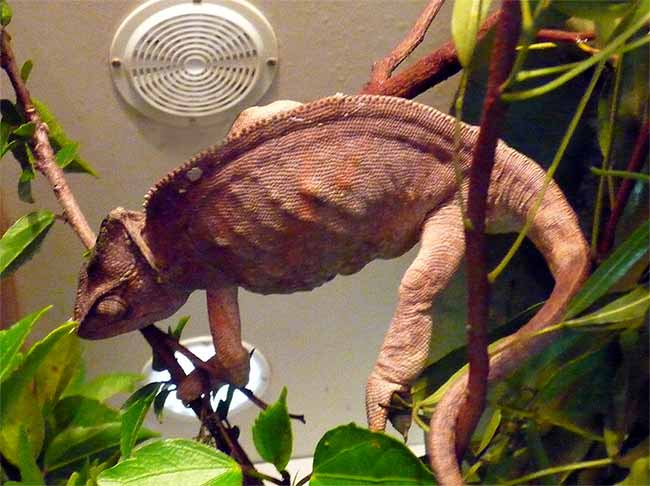
Symptoms of Metabolic Bone Disease
The early signs of Metabolic Bone Disease in chameleons are often irregular shapes of the rear leg bones or a misshapen casque, which is more obvious in males. Chameleon leg swelling or swollen ankles, particularly on the rear limbs, are another symptom. Lack of coordination, more frequently seen in the rear legs, is a further sign of trouble. This may look like the chameleon’s back legs are not working properly.
If MBD is allowed to develop, the chameleon’s rear legs lose their ability to grip branches properly and eventually, the chameleon will be unable to climb.
If left untreated the damage to the bones will increase due to lack of calcification, until even the slightest knock may result in a broken bone.
Other problems include dehydration due to difficulty in drinking, a decreased appetite, and bumps and lumps in odd places around the body.
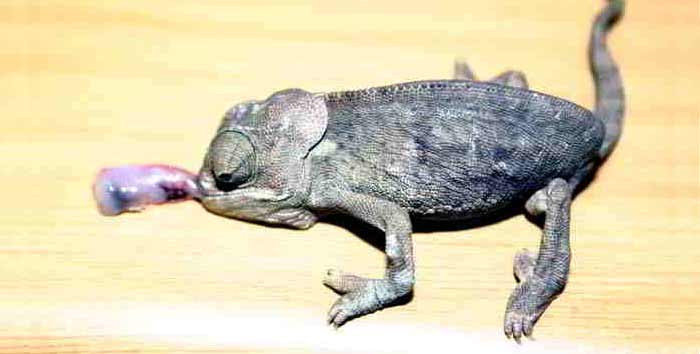
What causes MBD in chameleons
Without ultraviolet light, a chameleon cannot synthesize vitamin D3, which leaves food as its only source. In captivity, chameleon food rarely contains sufficient vitamin D3. This vitamin enables the chameleon to absorb calcium properly and distribute it to the bones. The result is a calcium deficiency in the chameleon.
Veiled chameleons are the species most commonly affected by MBD. Other commonly kept species such as Panther and Carpet chameleons more rarely show symptoms but UV light should be provided nonetheless.
The reason why Veiled chameleons are more susceptible is they are often allowed to grow too fast.
Coming from an area where food may be hard to find or only appear sporadically, Veiled chameleons will eat gluttonously when allowed to do so. This will cause them to grow faster than the calcium and necessary minerals can be assimilated to produce strong bones.
Occasionally, MBD will surface in a Veiled chameleon that is being well cared for by its owner. In this case, the MBD may result from the chameleon’s care when young, either by the breeder or the pet shop. This reinforces the need to obtain your chameleons from a knowledgeable and reputable source.
MBD can also appear in gravid females as the calcium is used to form the eggs.
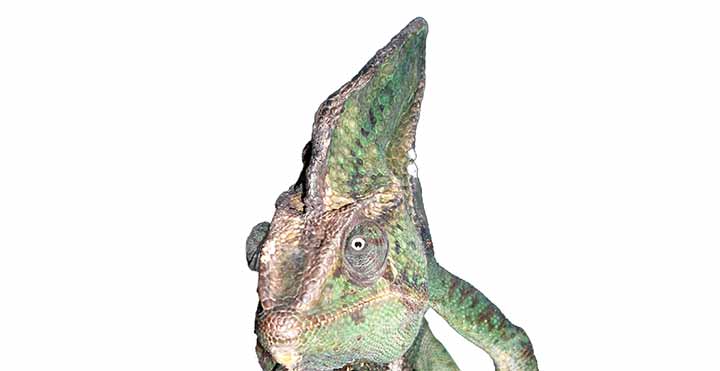
Treatment of Metabolic Bone Disease
It takes time for MBD to become a problem. Mild cases caught early and treated correctly can be successfully resolved, although MBD recovery time can still take many weeks or longer.
If left too long, it can be harder to treat. The bent legs and other deformities will always be present. Sadly, the life expectancy of the chameleon is likely to be reduced.
For mild cases, treatment will involve improvement to the diet, calcium and vitamin D supplements and proper UV exposure. This is the time to review all the husbandry of your chameleon – the size of the cage, the position, size and age of the UV lights, how you gut-load the food, the variety and type of food, how water is administered, etc.
More serious cases are likely to involve veterinary intervention. There may be broken bones that need attention. A more dramatic dietary change and supplements may be required, including injections of vitamin D and/or certain hormones/supplements. MBD may have affected the chameleon in ways not obvious without the advice of a vet, such as dehydration.
In all cases of MBD, you should seek the advice of a vet. Injections of calcium, normally calcium gluconate, may be administered but, subject to how advanced the problem has become, the damage is often irreversible.
Female chameleons that have had any Metabolic Bone disorders should not be used for breeding.
How to Avoid Metabolic Bone Disease
Avoiding Metabolic Bone Disease symptoms is simple and should be the goal from the day the chameleon arrives at your home.
Young Veiled chameleons should be fed sensibly – I found that feeding them for four days and skipping the fifth worked well. Be careful not to overfeed young Veileds. There is no benefit to excessively fast growth.
Ensure that adequate calcium supplement is being dusted on the food.
Give the chameleon a varied diet and provide foods that have the right calcium/phosphorous ratio. The closer to 2:1 the better. Insects like silkworms and crickets are good. Mealworms are not, being almost 1:1.
In my experience, the key to avoiding MBD disease is adequate UV light. A good 5.0 UV light, in good condition, placed at the correct distance for 12 hours a day. Remember that UV lights lose their effectiveness over time. Renew them when necessary – don’t delay too long just to save a bit of money.
(Click here for an article about UV lights.)
The cheapest source of UV-B is the sun, which is obviously far better than any artificial source. If it is at all possible, consider keeping your chameleons in (safe and secure) outdoor cages whenever your situation and the temperature permits. Even a few hours each week will be beneficial.
If there is no natural sunlight or adequate artificial ultraviolet light, the risks of MBD may, under strictly managed conditions, be reduced by a diet high in vitamin D3. Occasionally, books (particularly older ones) will indicate that a diet with sufficient vitamin D3 will remove the need for ultraviolet light altogether. This is not a recommended route and exposure to ultraviolet light should be viewed as essential.
Please Note:
Although some treatment advice for Metabolic Bone Disease is given in this article, it is not intended as a manual on how to treat sick chameleons. For this, you should seek the help of a vet.
Rather, the objective is to highlight some of the problems that may occur, along with their causes. It is hoped that such information might prevent such problems from occurring at all.
Updated July 2023

